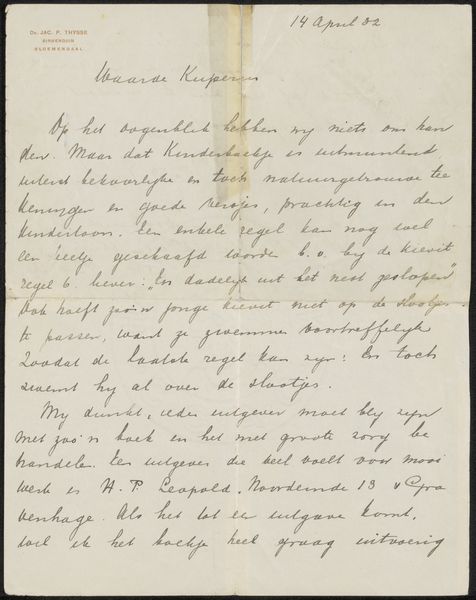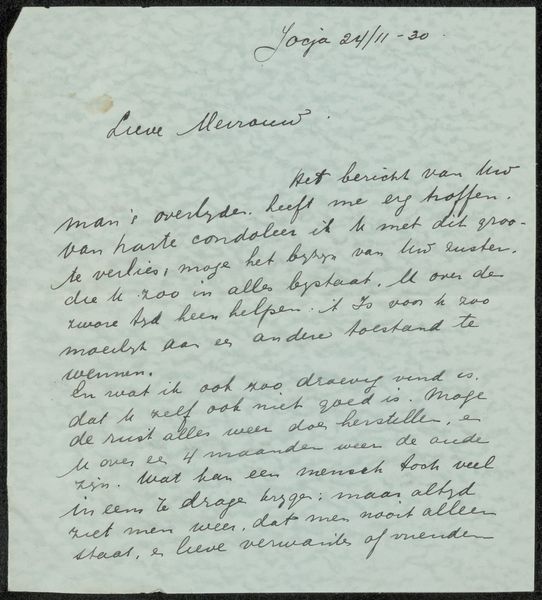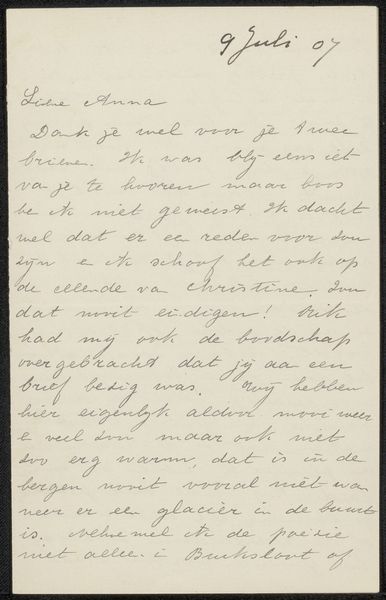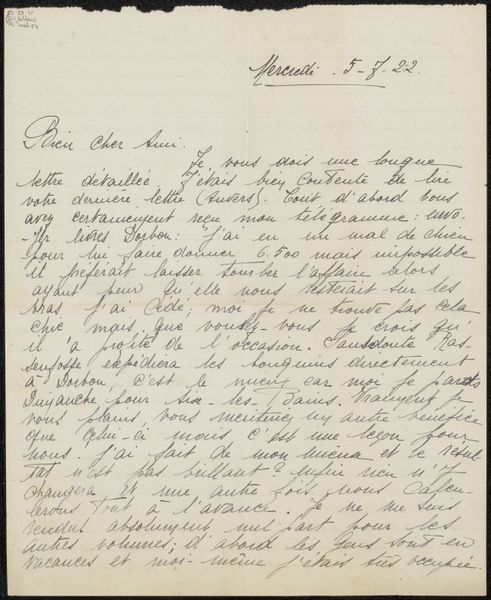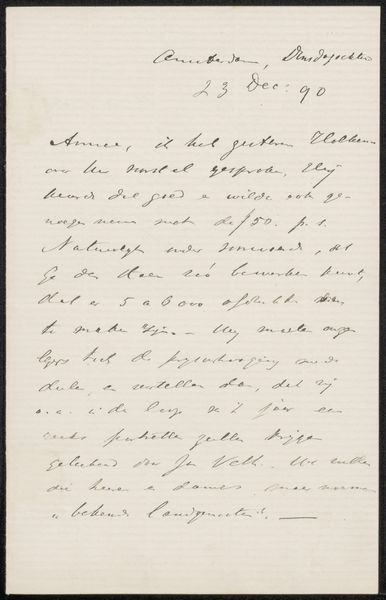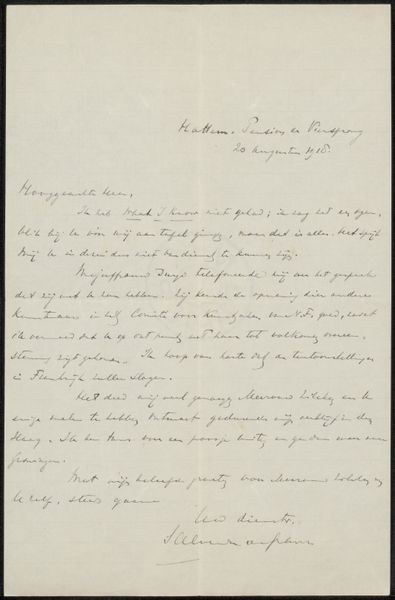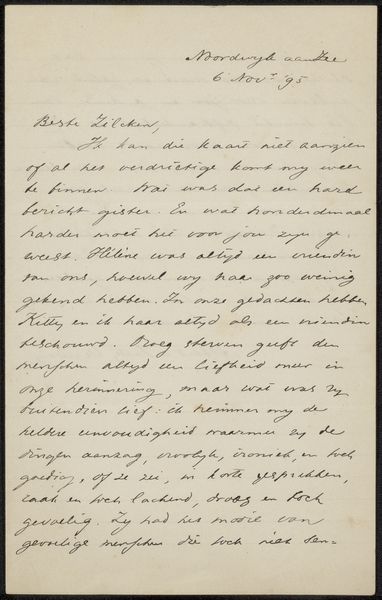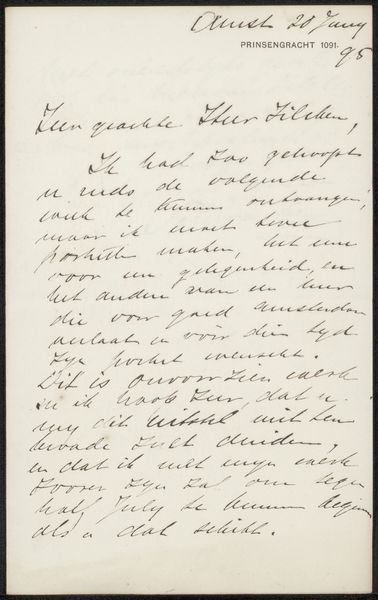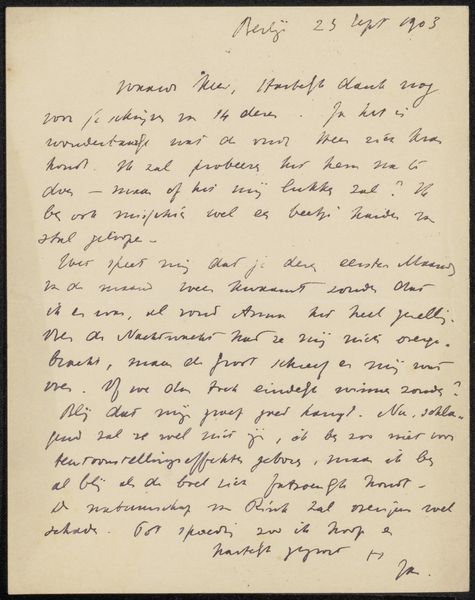
drawing, paper, ink, pen
#
drawing
#
paper
#
ink
#
pen
#
calligraphy
Copyright: Rijks Museum: Open Domain
Curator: My first impression is of intimacy. There's something very personal in witnessing handwriting, isn't there? Editor: It truly is, almost like reading someone’s thoughts. What exactly are we looking at here? Curator: We are viewing "Brief aan Sjoerd Kuperus," or "Letter to Sjoerd Kuperus." This work is a letter written in pen and ink on paper, probably around 1937, by Jac. P. Thijsse. It's a wonderful example of calligraphic expression. Editor: Yes, it definitely gives insight into the person writing. But as a historical object, how does it connect with its time? Curator: Well, Thijsse was a prominent figure, a teacher and a leading naturalist. This letter likely represents part of the intellectual and personal networks he was engaged with. The act of letter writing itself speaks to a specific era before the internet. Editor: I can feel that; this letter, aside from the personal, the handwriting that you mention. is like witnessing the infrastructure of intellectual life from almost a century ago. But getting back to the imagery; do you see symbolic significance here? Curator: The calligraphy has inherent artistic merit—look at the rhythm, the density of ink, the flourish of certain strokes. These choices communicate elegance. But if we step back, these forms evoke both a respect for tradition and a subtle playfulness. Handwriting itself can be considered as the cultural memory of communication style over time, each letter resembling the last one in different forms. Editor: Agreed, but beyond handwriting and networks, I would be remiss if I didn't address Thijsse's own place and time. The letter’s existence in this public sphere implies its relevance beyond a mere message. It seems Thijsse left some remarks on his friend's books he read to children. As the books evidently did not manage to make a breakthrough, Thijsse finds them very charming. In that light, who decided this object would have broader, lasting social and cultural value? Curator: Excellent question! It reminds us that museums and galleries play an active role in giving such material this significance. Ultimately, we hope it inspires appreciation for art across time, while giving a special attention to something old-fashioned and almost forgotten: good manners. Editor: Precisely, an almost-lost world revitalized through the texture of ink and the careful preservation of a handwritten message.
Comments
No comments
Be the first to comment and join the conversation on the ultimate creative platform.

